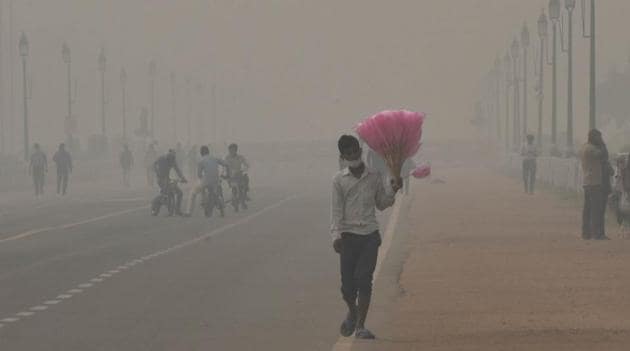Harvard study establishes bad air, Covid-19 mortality rate link
An increase of 1ug/m3 in average PM2.5 exposure raised the mortality rate of Covid-19 by roughly 11%, a group of Harvard University researchers have found, the latest in a series of studies that underscore the double whammy faced by people in polluted parts of the world during the pandemic.
An increase of 1ug/m3 in average PM2.5 exposure raised the mortality rate of Covid-19 by roughly 11%, a group of Harvard University researchers have found, the latest in a series of studies that underscore the double whammy faced by people in polluted parts of the world during the pandemic.

The latest study is by a team of researchers in Harvard University who carried out a statistical analysis of coronavirus disease mortality rates across the 3,089 counties in United States and compared it with the long –term exposure people in these regions had of ultra-fine PM2.5 particles.
“We found that an increase of 1 ug/m3 in the long-term average PM2.5 s is associated with a statistically significant 11% increase in the county’s Covid-19 mortality rate,” said the authors in their report, published in Science Advances on Wednesday.
The analysis takes into account average PM2.5 exposure between 2000 and 2016 and Covid-19 mortality up till June 18. The findings are significant for a country like India where people are exposed to the highest annual average concentrations of PM2.5 in the world.
According to the State of Global Air 2020 report published in October, the average Indian was exposed to 83.2ug/m3 of PM2.5 in 2019. For the average American, this number was less than a tenth at 7.66. At 11am on Thursday, the average hourly PM2.5 concentration across the 34 pollution monitors in Delhi stood at 360ug/m3. India’s Capital is currently seeing a spike in Covid-19 cases.
Air pollution causes a wide variety of health effects, some of the worst of which is due to the effects on an organ that Covid-19 too targets: the lungs. Some of these are shortened life expectancy, increased inflammation and tendency to develop clots, and greater susceptibility to breathing problems such as asthma, noted a separate research paper by researchers from University of Catania, Italy.
The implication of increased air pollution on Covid-19 outcomes was first reported from Italy. “Our data show a significant relationship between mean PM 2.5 concentration during February 2020, one month before the beginning of the outbreak, and the number of Covid-19 cases per region (updated to March 31st), confirming how more polluted areas are the ones where the contagion is more widespread,” said the authors From the University of Catania in their August, 2020 update to their paper first published in April.
“More significantly patients in polluted areas present with more severe forms of the disease requiring ICU. Mortality is two-fold higher than the other regions despite similar rates of ICU admission,” they added.
This is now backed by the statistical analysis of the American counties and their Covid-19 outbreaks. The Harvard University researchers used a method known as regression analysis to zero-in on possible factors that raised chances of Covid-19 mortality.
Exposure to PM2.5 appeared to be the most prominent. “We also found that population density, days since the first Covid-19 case was reported, median household income, percent of owner-occupied housing, percent of the adult population with less than high school education, age distribution, and percent of Black residents are important predictors of the Covid-19 mortality rate in the model,” they added.
The authors, however, add that their analysis is limited by lack of access to “individual-level risk factors” such as age, race, and smoking status, which can have an impact on the Covid-19 mortality rate.
But, they add, an ecological regression analysis could help point research into the direction of different biological factors that can be at play. “For example, it has been hypothesized that chronic exposure to PM2.5 causes alveolar angiotensin-converting enzyme 2 (ACE-2) receptor over expression and impairs host defenses. This could cause a more severe form of Covid-19 in ACE-2–depleted lungs, increasing the likelihood of poor outcomes, including death,” they said.
At the least, the authors add, such research could also provide a “strong scientific argument” for revision of ambient air quality standards and other environmental policies in the midst of a pandemic.
Get Current Updates on India News, Lok Sabha Election 2024 live, Infosys Q4 Results Live, Elections 2024, Election 2024 Date along with Latest News and Top Headlines from India and around the world.



